Avant garde music / team building
As a warm-up exercise before the main conference sessions, Ranulph Glanville conducted a singing exercise planned by Aartje Hulstein and himself, consisting of rehearsals in the EMPAC Theater and a subsequent performance in the EMPAC Concert Hall. The result is a piece titled Sitting Wave, consisting of two movements, which were played back to the conference community immediately after its performance in the EMPAC Concert Hall. The rehearsals and performance can be listened to below.
Audio clip: Adobe Flash Player (version 9 or above) is required to play this audio clip. Download the latest version here. You also need to have JavaScript enabled in your browser.
Audio clip: Adobe Flash Player (version 9 or above) is required to play this audio clip. Download the latest version here. You also need to have JavaScript enabled in your browser.
Audio clip: Adobe Flash Player (version 9 or above) is required to play this audio clip. Download the latest version here. You also need to have JavaScript enabled in your browser.
Audio clip: Adobe Flash Player (version 9 or above) is required to play this audio clip. Download the latest version here. You also need to have JavaScript enabled in your browser.
Audio clip: Adobe Flash Player (version 9 or above) is required to play this audio clip. Download the latest version here. You also need to have JavaScript enabled in your browser.
Audio clip: Adobe Flash Player (version 9 or above) is required to play this audio clip. Download the latest version here. You also need to have JavaScript enabled in your browser.
Audio clip: Adobe Flash Player (version 9 or above) is required to play this audio clip. Download the latest version here. You also need to have JavaScript enabled in your browser.




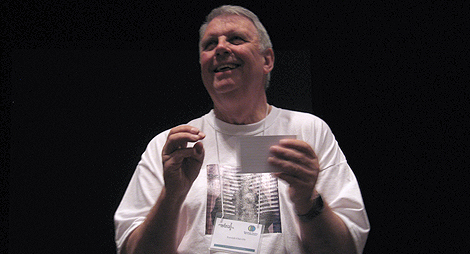
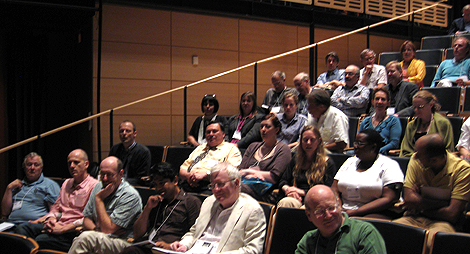
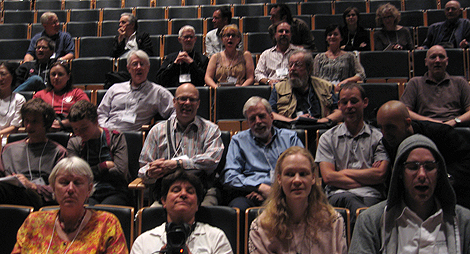
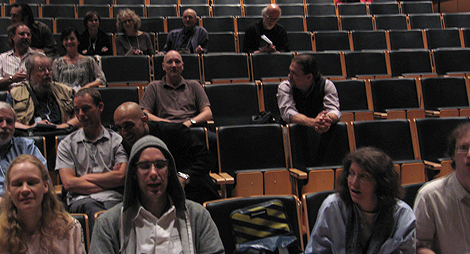
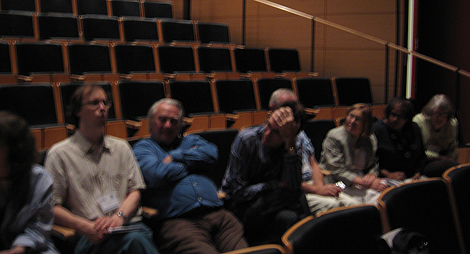

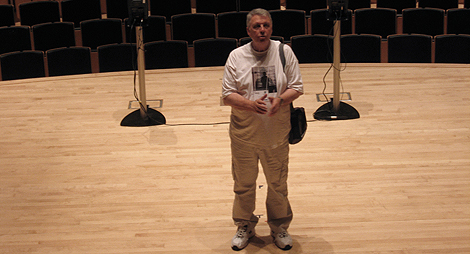




Although we did some singing (what makes it “avant garde” is that it was harmonic singing, and the would was not composed but an outcome of moderated chance processes which can be captured in the Law of High Numbers), the key point of this exercise was that we should learn to listen. Put rather over-simply, each singer was invited to listen to the sounds of those around them and to borrow from the sounds the others were making.
At the centre of the conference C:ADM is the notion of a conversation, and as Josef Beuys said, there is no conversation without a listener. In the western world, we are much more interested in speaking than listening (for instance, our conferences emphasise the reading of papers). To allow a conversation to develop, to tap the creativity, requires us to listen. The reason we sang, and sang as we did, was to remind ourselves of the importance of listening, and to practise it.
At the end of our performance—for most of us the only time we will ever perform in a major concert hall—we moved from the choir to the main auditorium, to listen to a recording made as we performed, a few minutes later. Those are the recordings “Sitting Wave – Movements 1 and 2″.
It was not the singing that was important: it was the listening that inspired the singing.
The introductory exercise was an astonishing example in architectural design as it could be. The entry’s design allowed for a presentiment of what was about to emerge in the conversation sessions. It thus gave orientation without limiting exploration.
In principle, the sessions followed the structure of the introductory exercise. A theme and a set of instructions served to generate a conversation which was followed by the (re-)presentation of the conversation.
And thus, the playback of the exercises listened/sung in the concert hall of the EMPAC allowed for an astonishing insight into the compositional qualities of conversational activity.